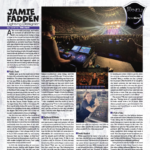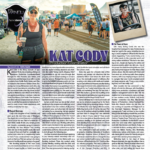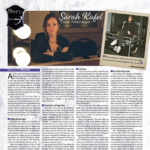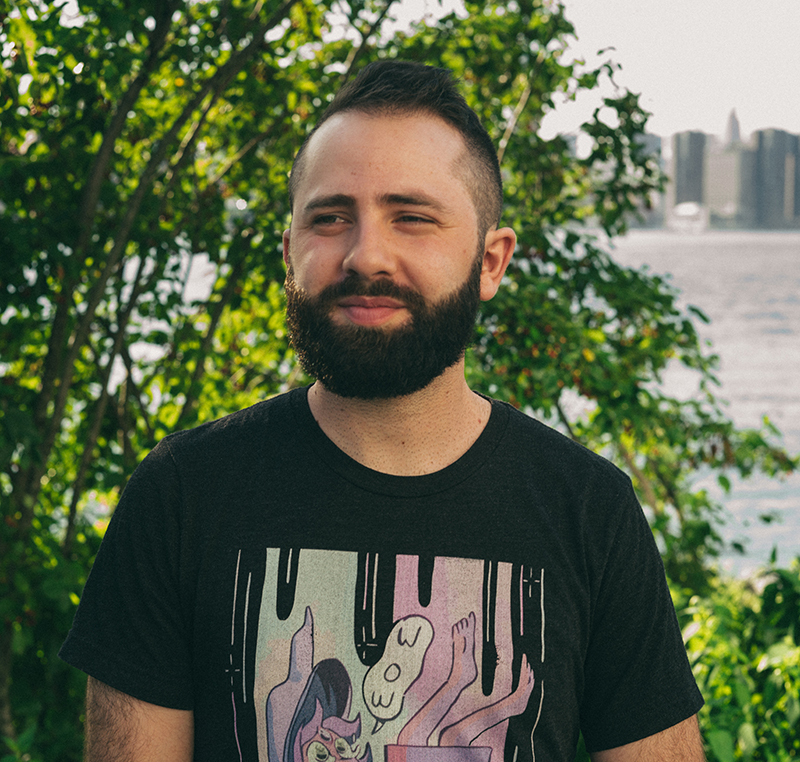
The Parnelli NextGen series in PLSN spotlights up-and-coming live event professionals who have been making their mark on the industry. All of these talented individuals are also in the running for the “NextGen of the Year” Parnelli honor, which will be announced at the 21st Parnelli Awards ceremony in April 2023.
It’s a common tale to be a fan of a band and then have that be your inspiration for seeking work in the live concert touring biz. But imagine going from fan to Lighting Designer/Director of that very band? You can bet that when Ben Factor went to his first Umphrey’s McGee concert at 16, he never dreamed he would be running their lights on major concert tours less than a decade later. But that is exactly what happened.
“In the back of my mind all this time maybe it was a goal, but I literally didn’t think it was possible,” Factor says with a tone of disbelief. “To this day it continues to blow my mind that it’s really happening—I’m lighting Umphrey’s McGee.”
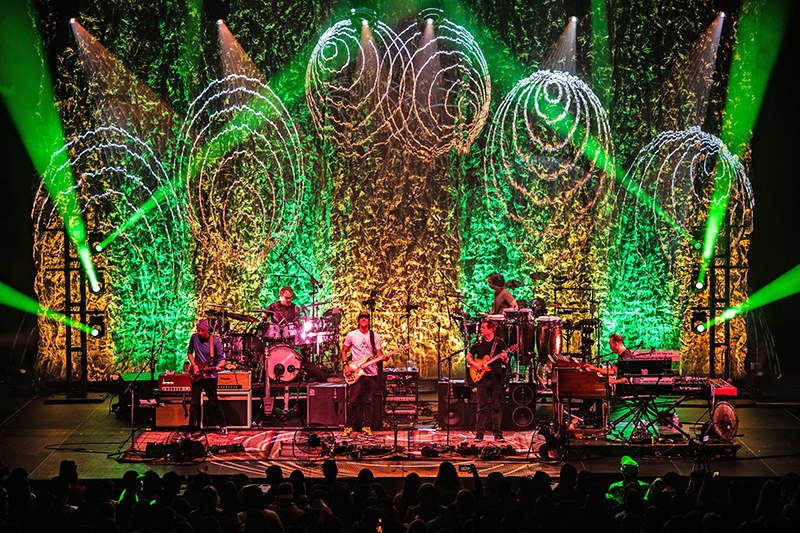
Finding a Path
Born in Westchester County, a suburb of New York City, Factor played guitar for years before picking up multiple instruments while working at the local summer rock band camp. A soccer injury was severe enough to put him in a wheelchair for a couple of months, which is when he downloaded Logic and Pro Tools and “discovered the world of music technology.” Then it was off to University of Michigan to study audio engineering, though that was not what he expected. “It turned out the program was more like a mixed media, multi-disciplinary arts, and technology program, and I attribute that to expanding my mind into thinking about music, coding, and technology together. I was getting deeper into all aspects of [entertainment] technology as opposed to just turning knobs.”
While still in school, Factor ventured into the local and regional concert scene, developing relationships with local bands. He remained an avid Umphrey’s fan, and the band toured the Midwest often enough for Factor to catch 10 of their shows a year without driving more than a few hours. He started thinking about also doing lighting, and found himself in the 400-person club in Ann Arbor, MI called the Blind Pig, a “rock dump of a venue — and I mean that as the highest compliment.” There he sat in front of an 8-Channel Chauvet DJ Obey lighting controller. “I liked the idea of mixing sound, lights, and video, and I started doing house parties like that. We would bring in all this gear including bad fog machines that set off fire alarms—it was classic learn-as-you-go.”
When it came time to do his college senior thesis, it all came together. “I am so grateful for my professors giving me the freedom to put on a concert doing both sound and lighting.” He brought indie rockers The Stellars into the studio, and while he ran a Yamaha CL5 console to mix their sound, he was focused on lighting them. Before the show, he flew to Denver where he spent two days with Lighting Designer and “grandMA wizard” Luke Stratton in an intense training session with an MA onPC command wing. “He helped me really get a deep understanding of all it could do.” In the end, the thesis was a great success, though it “failed” in one sense: “When I was doing this project, I realized that my vision of doing a tour handling both sound and lights wasn’t going to work,” he says with a laugh.

An Offer He Couldn’t Refuse
But before he graduated, he would have his first professional gig as an LD of the Summer Camp Music Festival—which Umphrey’s headlines every year. “I worked the small stage and made some good relationships with the bands that played there.” As he approached graduation, sure enough he got a call from one of them—Mungion, who were going out opening for Spafford. Then as the tour was about to start, the LD for Spafford couldn’t go. So suddenly Factor was handling lights for both. “You work lights for three sets of jam music every night, and you really learn what the whole thing is all about,” he says.
The team at Spafford really liked what he was doing and had him come out for their much bigger fall tour. “I toured with them from 2017 to 2019, growing a lot with them.” Each tour got bigger, and so did Factor’s gear list. “Instead of Chauvet 250s, it was Rogue R1s, and later it was MAC Vipers.”
By now he had moved to Brooklyn and was freelancing corporate gigs, making more money, dating, and feeling the pull to take a break from the road. But fate had other plans. “As I transitioned to more local gigs, of course I got word that Umphrey’s McGee’s LD was retiring. Then I was like, ‘Oh sh*t, here’s an opportunity—and I’m not exaggerating—it was the job.” He got the job, and that is where he remains today.
His console of choice is the MA Lighting grandMA2, with auxiliary MIDI controllers for additional playback. As far as his choice of lights, “I’m more interested in thinking about the design as opposed to fixture type. I have programming data for the Claypaky B-Eye K20 and Robe Spiider. Right now, they aren’t in the current design, but I’m programmed for them.” He also notes that there has been a shift in his approach recently. “The design process for a jam band is beam- and haze-based, but heading into this winter tour, we incorporated an aluminum mesh made by Sew What? I love it and feel like the show is empty without it ever since it was introduced.” He lights it with Elation Colour Chorus and/or GLP impression x4 Bar 20s to uplight/downlight it. “I also love turning the MAC Vipers around and shooting gobos at it. This year at Summer Camp, I hung six Ayrton Perseo Profiles at front of house and projected gobos onto it, and it was pretty cool.”
Factor says he loves the fun and challenge of busking with a jam band, as it allows him to constantly shift, add new elements, and experiment. “But when I’m home, I do these little 3D timecode projects.” He just did a pop show for the singer-songwriter (and long-time friend) Charlie Burg, and the whole show was cue-to-cue. “But the freedom I get with Umphrey’s is really inspiring—sometimes I flop a bit, but then I come back strong. My next goal is integrating video content work with lighting.” He’s also still picking up work around New York when he’s off the road.
But it always comes back to the music. “I find that in this industry there are endless niches to become an expert in: rigging, programming, electricity, etc. Right now, I see myself on the performing and operating side of that equation. My focus is always the music—I can feel and play in 7/8 time—and that is what informs my choices.”
